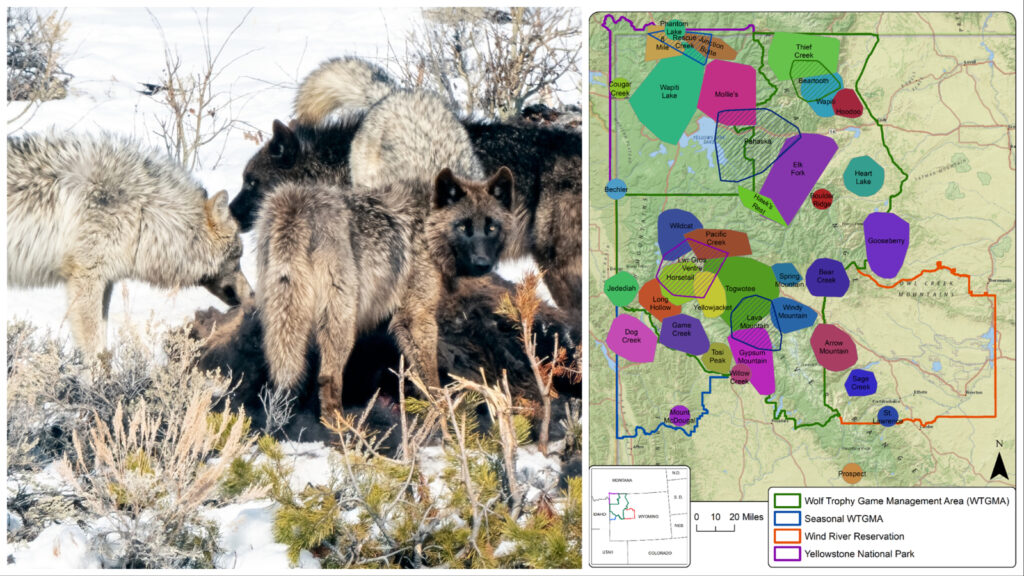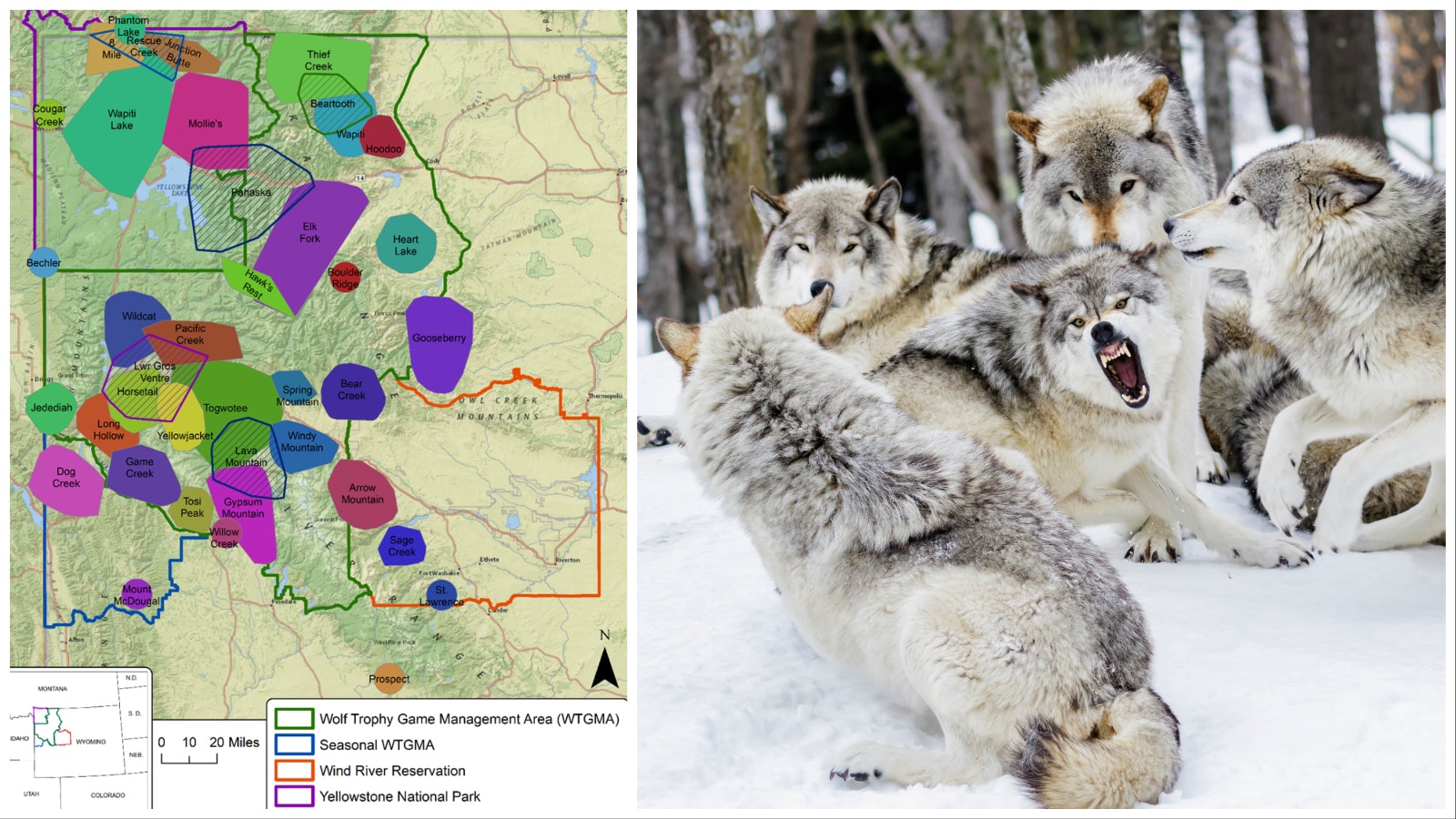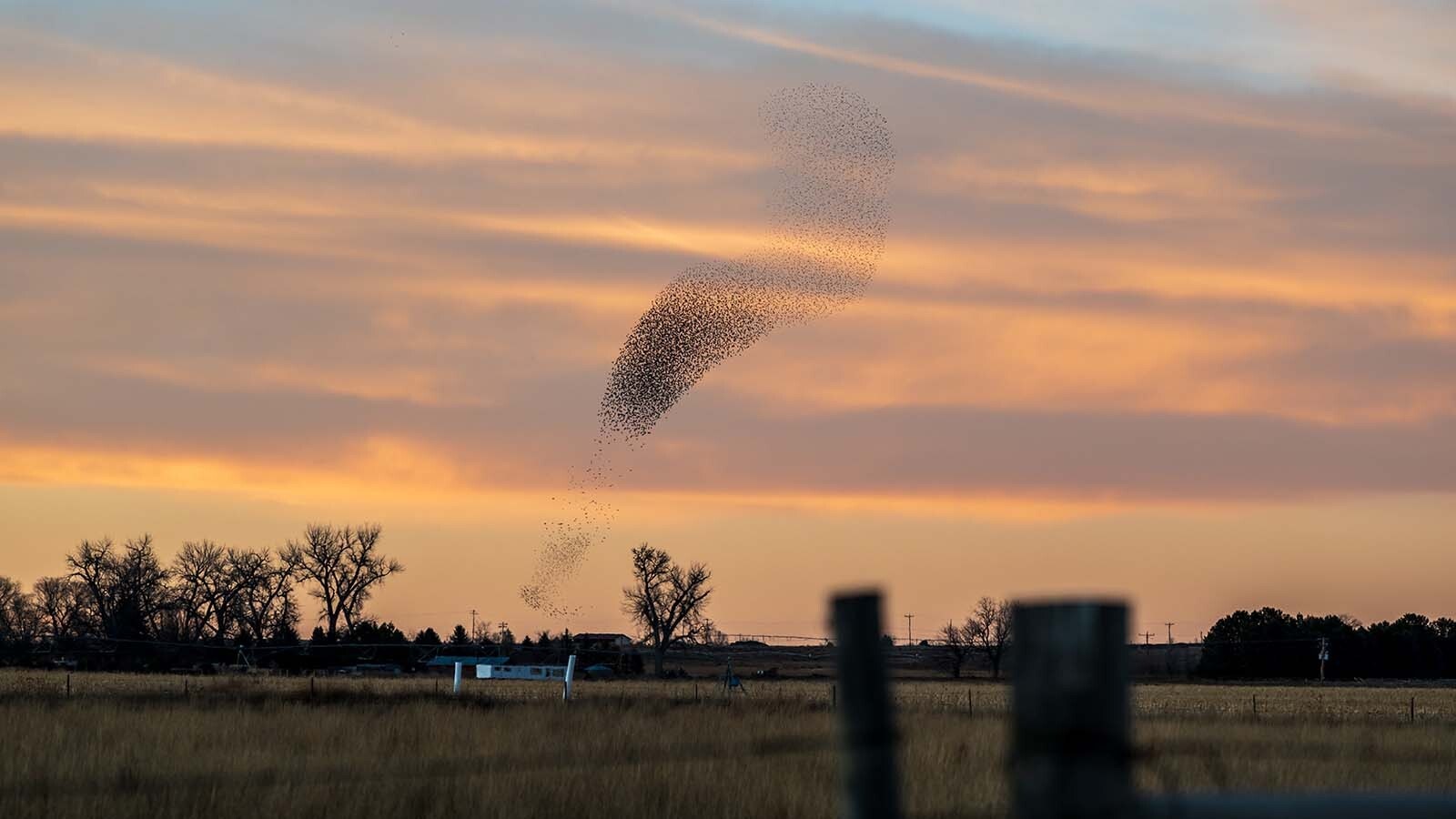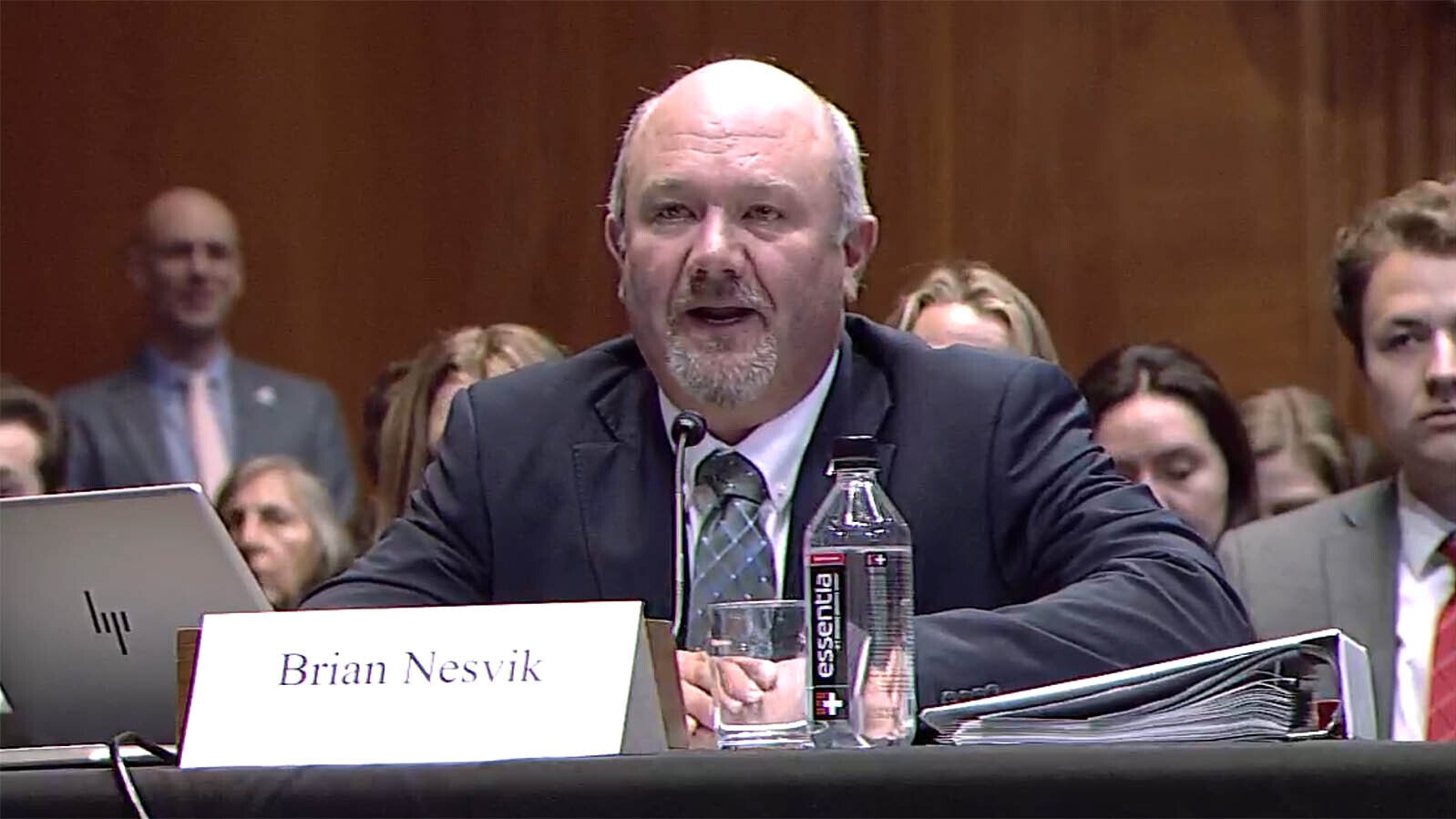‘Patchwork maps of wild areas in Wyoming and Minnesota show that, not unlike street gangs, wolf packs respect each other’s “colors” in terms of protecting their turf.
When lines are crossed, dismemberment and death can result, a Wyoming biologist said.
A detailed graphic created researchers who tracked six wolf packs in Voyageurs National Park in Minnesota indicates the canines avoid crossing other packs’ lines.
Wyoming Fish and Game Department Large Carnivore Specialist Dan Thompson said that’s not surprising, because the same has been observed in Wyoming packs.
“This is not necessarily surprising, but the use of fine-scale data demonstrates the territoriality of wolf packs,” he told Cowboy State Daily.

It Can Come Down To Muscle
Game and Fish data shows a similar lack of overlap between the numerous established wolf packs in an around Yellowstone Park.
Again, that should come as no surprise, Thompson said.
Territories can change over time, and it often can boil down to which pack can muster the most muscle, he said, adding it’s an interesting study in the group dynamics of the animals.
“Pack dynamics change and territory boundaries shift through time, providing unique representations as to how pack size and strength allow for localized boundary fluctuations,” he said.

Bloody Consequences
Rather than risk open conflict, wolf packs prefer to keep a tenuous peace by marking their boundaries with “scent,” Thompson said. Dog owners will note the familiar lifting of a leg at a fire hydrant or neighbor’s shrubbery.
But if a fight breaks out, things get ugly, he said – and bloody.
“As you would expect with an apex predator like a wolf, territorial disputes aren’t for the faint of heart,” Thompson said. “Contested disputes over territory or other resources can result in death and dismemberment, hence the ‘proactive’ scent-marking to delineate boundaries.”
Apparently Unaffected By Population, Hunting
Minnesota has about 2,700 wolves, according to the International Wolf Center.
It’s the only place in the Lower 48 where wolves weren’t eradicated and later had to be reintroduced. Wolves in Minnesota remain under federal protection and may not be hunted, Outdoor Life reports.
That means they live in a smaller geographical area and under different conditions than the roughly 1,700 wolves in the Northern Rocky Mountains – including at least 314 wolves in Wyoming.
Wolves here may be hunted outside of Yellowstone Park in the states of Wyoming, Idaho and Montana. And outside of a trophy game zone immediately adjacent to Yellowstone, wolves in about 85% of Wyoming may be shot on sight without a hunting license or bag limit.
However, as the Wyoming graphic shows, even with outside pressure from humans, wolf packs apparently maintain respect for each other’s territory.
“As with everything there are always anomalies, such as single wolves dispersing as transients, but the territoriality and pack dynamics are expected with wolves and also factored into their conservation and management in Wyoming,” Thompson said.
No ‘Wolf Gang Turf’ In Colorado Yet – But It’s Coming
Some of those transient wolves reached Colorado and established the North Park Pack about two years ago. As that state’s only established pack, the North Park wolves haven’t had to worry about rumbles over turf.
However, they might want to brush up on their brawling skills, because that’s about to change.
Colorado plans to reintroduce about 50 more wolves by the end of this year. Wolves there will remain under federal protection and won’t be hunted anytime soon, although a hunting season might eventually be considered, Colorado Parks and Wildlife Department spokesman Joey Livingston recently told Cowboy State Daily.
During recent public testimony in Denver, people expressed strong opinions both for and against Colorado over possibly having a wolf hunting season.





